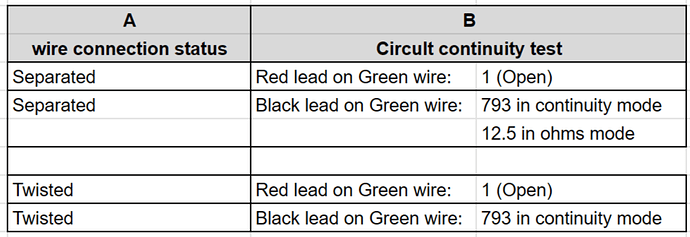Since my Concord 4 system was installed 10 years ago, I’ve been living with the issue of 4 sensors (3 perimeter and 1 CO gas) being activated simultaneously whenever an alarm is triggered.
I’ve ignored the problem for years, and finally I took some time to investigate, and I now believe I’m on to something and need your help.
Investigation and Findings:
-
I went through each terminal on my main board, the 8 zone snapcard, and 8 zone expansion module, to identify which terminal is connected which zone.
-
I found that the 4 sensors that were simultaneously going off were connected to physically adjacent, consecutive terminals on the snapcard. (This was a big a-ha moment for me).
The 4 sensors are in bold below (basement door, garage window, kitchen window and door, and 2F CO).
Terminal labeled “Zone 6” CO 2F
Terminal labeled “Zone 5” kitchen window and door
COM for 4/5/6
Terminal labeled “Zone 4” garage window
Terminal labeled “Zone 3” basement door
Terminal labeled “Zone 2” CO 1F
COM for 1/2/3
Terminal labeled “Zone 1” backdoor
-
I examined the wiring more closely, and realized the “basement door” com wire was connected to the COM terminal designated for 4/5/6. To clarify, the COM for 1/2/3 only had 2 wires connected, and the COM for 4/5/6 had 4 wires connected.
-
I felt like a genius and proceeded to remove the basement door COM wire from the COM terminal for 4/5/6 and connected it to the first COM terminal (intended for 1/2/3). I was confident this was the issue that was hidden for 10 years!
-
I powered the system and triggered the alarm by tripping a door. To my disappointment, the status showed that the “garage window” and “kitchen window and door” were open. (At least, the “basement door” did not pop up.) (Fyi, I had removed the 2F CO sensor from the panel temporarily, so that’s not in the investigation.)
Next Steps
What is my next course of investigation? Some questions I have:
- Could the COM terminal (designated for zones 4/5/6 on the snapcard) be causing the problem?
- Do I have to use designated COM ports for the sensors? (Or, do they just not want you to connect too many wires to one COM port?)
- On my 2nd expansion board (8 module expander), only 4 zones are used. Would moving the 3 problem zones to this different expander solve the problem?
I feel like I’ve made some progress here. Please let me know what else I could do at this point. Thank you.















